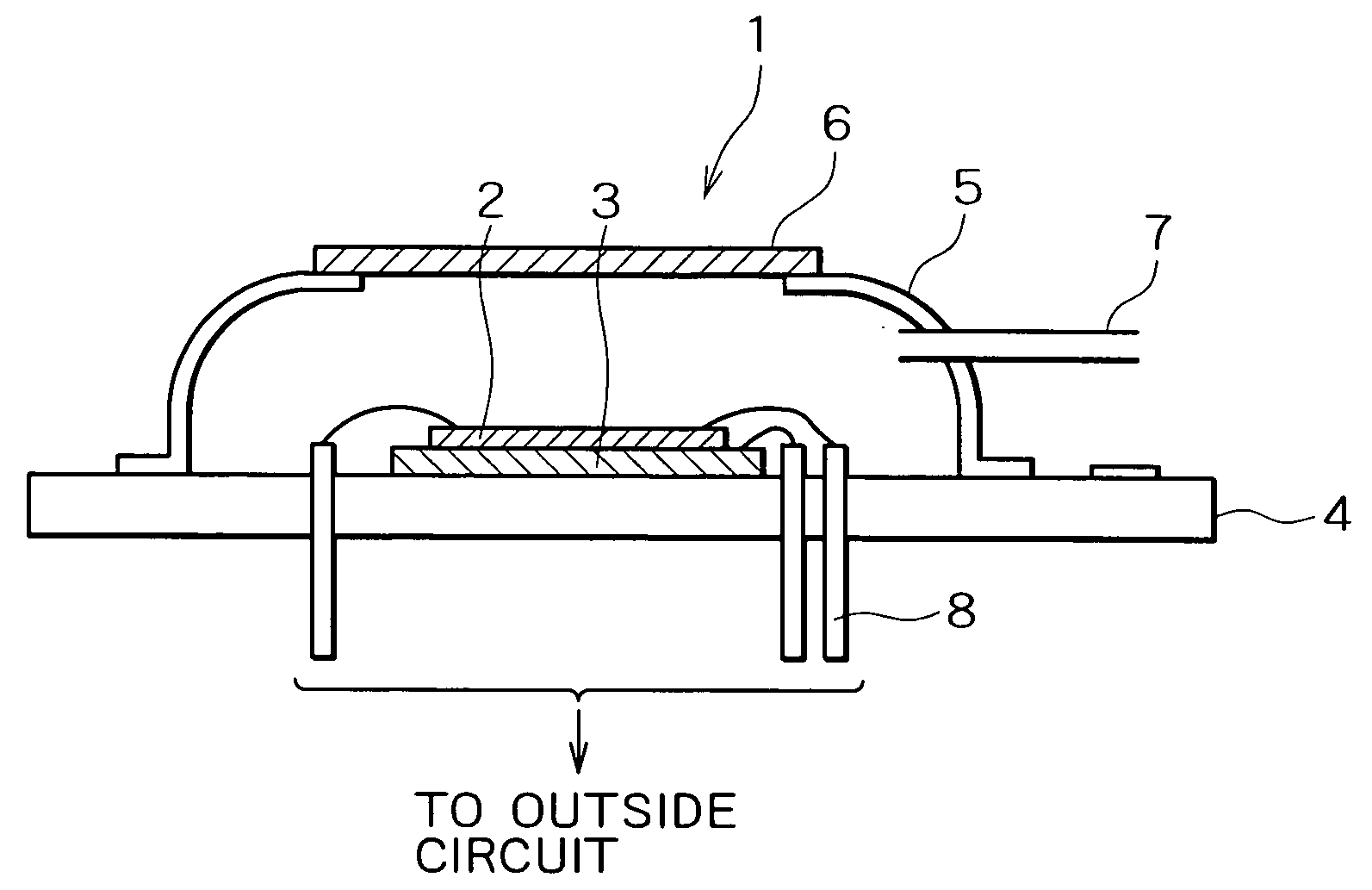Bolometer infrared detector and afterimage reduction method
a technology of infrared detector and afterimage reduction, which is applied in the field ofbolometer infrared detector, can solve the problems of conventional infrared detectors and raise a serious problem for a system which acquires heat images in real time, and achieve the effect of increasing the width of a puls
- Summary
- Abstract
- Description
- Claims
- Application Information
AI Technical Summary
Benefits of technology
Problems solved by technology
Method used
Image
Examples
first embodiment
[0069] At first the bolometer infrared detector and the afterimage reduction method using the bolometer infrared detector according to the first embodiment of the present invention will be explained with reference to FIG. 1A to FIG. 4. FIGS. 1A and 1B are cross sectional views exemplarily showing the structures of the bolometer infrared detector and the infrared detecting element of the first embodiment. FIG. 2 is a block diagram showing the configuration of an external circuit of the infrared detector. FIG. 3 is a flowchart showing procedures of the afterimage reduction method. FIG. 4 is a graph showing a change in control temperature of a Peltier device.
[0070] As shown in FIG. 1A, the bolometer infrared detector 1 comprises the infrared detecting element 2 detecting infrared rays incident thereto via an optical system, a temperature control element, such as the Peltier device 3 which controls the temperature of the infrared detecting element 2, a vacuum package which comprises th...
second embodiment
[0082] The bolometer infrared detector and the afterimage reduction method using the bolometer infrared detector according to the second embodiment of the present invention will be explained next with reference to FIG. 5 and FIG. 6. FIG. 5 is a flowchart showing procedures of the afterimage reduction method. FIG. 6 is a graph showing the transition of the control temperature of a Peltier device.
[0083] In the first embodiment described above, the control temperature of the Peltier device 3 is raised every time the high temperature object detector 23 detects a high temperature object to reduce the afterimage. However, by this method, the temperature of the infrared detecting element 2 rises gradually, resulting in that the temperature coefficient of resistance (TCR) of the bolometer thin film 16 (vanadium oxide) constituting the temperature detector 19 changes and the sensitivity changes gradually. Further, power consumption for temperature control becomes large if the control temper...
third embodiment
[0090] The bolometer infrared detector and the afterimage reduction method using the bolometer infrared detector according to the third embodiment of the present invention will be explained with reference to FIG. 7 to FIG. 10. FIG. 7 is a block diagram showing the constitution of an external circuit of the bolometer infrared detector. FIG. 8 is a flowchart showing procedures of the afterimage reduction method. FIGS. 9A and 9B are graphs showing pulse bias waveforms. FIG. 10 is an explanatory graph showing the operating principle of the infrared detecting element 2.
[0091] In the first and second embodiments described above, the control temperature of the Peltier device 3 is raised to increase the temperature of the infrared detecting element 2 when the high temperature object detector 23 detects a high temperature object, thereby reducing the afterimage. However, when the control temperature of the Peltier device 3 is changed, the temperature of the whole infrared detector 1, i.e., ...
PUM
 Login to View More
Login to View More Abstract
Description
Claims
Application Information
 Login to View More
Login to View More - R&D
- Intellectual Property
- Life Sciences
- Materials
- Tech Scout
- Unparalleled Data Quality
- Higher Quality Content
- 60% Fewer Hallucinations
Browse by: Latest US Patents, China's latest patents, Technical Efficacy Thesaurus, Application Domain, Technology Topic, Popular Technical Reports.
© 2025 PatSnap. All rights reserved.Legal|Privacy policy|Modern Slavery Act Transparency Statement|Sitemap|About US| Contact US: help@patsnap.com



